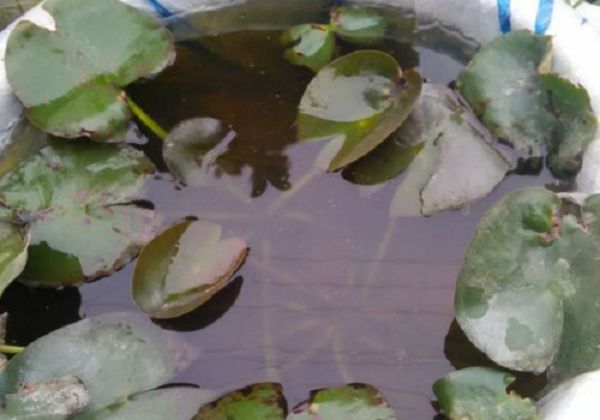The leaves of water lilies are black and rotten. How is it?

Water lilies have ornamental value for their elegant posture and brilliant, beautiful flowers. If they are potted, they will not only bring us a pleasant experience in summer flowering, but also have a wild taste. But summer water lily must pay attention to the method, otherwise the plant is more likely to appear black leaves, rotten situation. So, what's with the blackening and rotting of the lily leaves? Today, Xiaobian will discuss with you the reasons for the blackening and rotting leaves of potted water lilies.
The main reason for the blackening and decay of water lily leaves is that many basin friends think it is caused by improper fertilization or illumination. The real cause of this is usually not because you apply too much fertilizer or too much concentration, or because the sun is too bright or too long. The most probable cause is our poor control of the water depth.
But what depth is appropriate? Is the water level too high or too low? In fact, the cause of the blackening and rotting leaves of water lilies is generally due to the low water level, that is, the lack of water. Usually may be due to too busy or forgot to add water in time, in the water line for a long time to maintain a relatively low state, the leaves of the lily gradually appear black rot.
Although it is said that water lily is suitable for planting in spring, water lily cultivation in spring should not add too much water, and the water level should be kept shallow, but this is also a relative state of practice. However, it cannot be too shallow for a long time, because the plant is constantly growing, especially its stems and leaves are constantly being pulled out. When the leaves spread out on the water surface, add water to the basin in time.
Not only should we add water in time, but with the continuous rise of water lily stems and leaves, we add water step by step, not in one step, nor in one step. And add water should be added layer by layer, so that the water line and its stems and leaves always maintain a certain proportion, neither too high nor too low. This ensures that the lily pad remains healthy and vigorous.
However, as the temperature rises gradually in summer, the weather will gradually become hot. Especially if the lily is exposed to the hot summer sun, if the water level is low and the water volume is small, the water temperature will rise sharply, causing its leaves to be burned, often with rolled leaves and dried leaves until they rot. And as the leaves rot, so do the stems, and eventually the whole lily may suffocate.
Therefore, spring is suitable for raising water lilies at low water levels, mainly because the temperature in spring is relatively low and the light intensity is not large. If it is raised in shallow water, the water temperature can be raised faster, thus accelerating the growth of water lilies. However, if it is in the summer of high temperature and hot light, if the water lily is raised in shallow water, it is easy to make its stems and leaves black and rot, which is mainly the result of the rapid rise in temperature in the basin.
Therefore, we can not raise water lily in summer as shallow as spring, but to raise the water level in time to ensure that the plant will not be stuffy due to the sudden increase in temperature in the pot, so as to avoid the occurrence of blackening and decay of its stems and leaves. At the same time, potted water lily should not be placed in the summer full sun exposure, need appropriate shade, otherwise the leaves of the plant may wither, or even appear curling situation, will inevitably reduce the ornamental value of potted plants, but also may affect its normal growth.
Related
- Fuxing push coffee new agricultural production and marketing class: lack of small-scale processing plants
- Jujube rice field leisure farm deep ploughing Yilan for five years to create a space for organic food and play
- Nongyu Farm-A trial of organic papaya for brave women with advanced technology
- Four points for attention in the prevention and control of diseases and insect pests of edible fungi
- How to add nutrient solution to Edible Fungi
- Is there any good way to control edible fungus mites?
- Open Inoculation Technology of Edible Fungi
- Is there any clever way to use fertilizer for edible fungus in winter?
- What agents are used to kill the pathogens of edible fungi in the mushroom shed?
- Rapid drying of Edible Fungi



